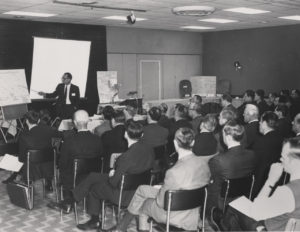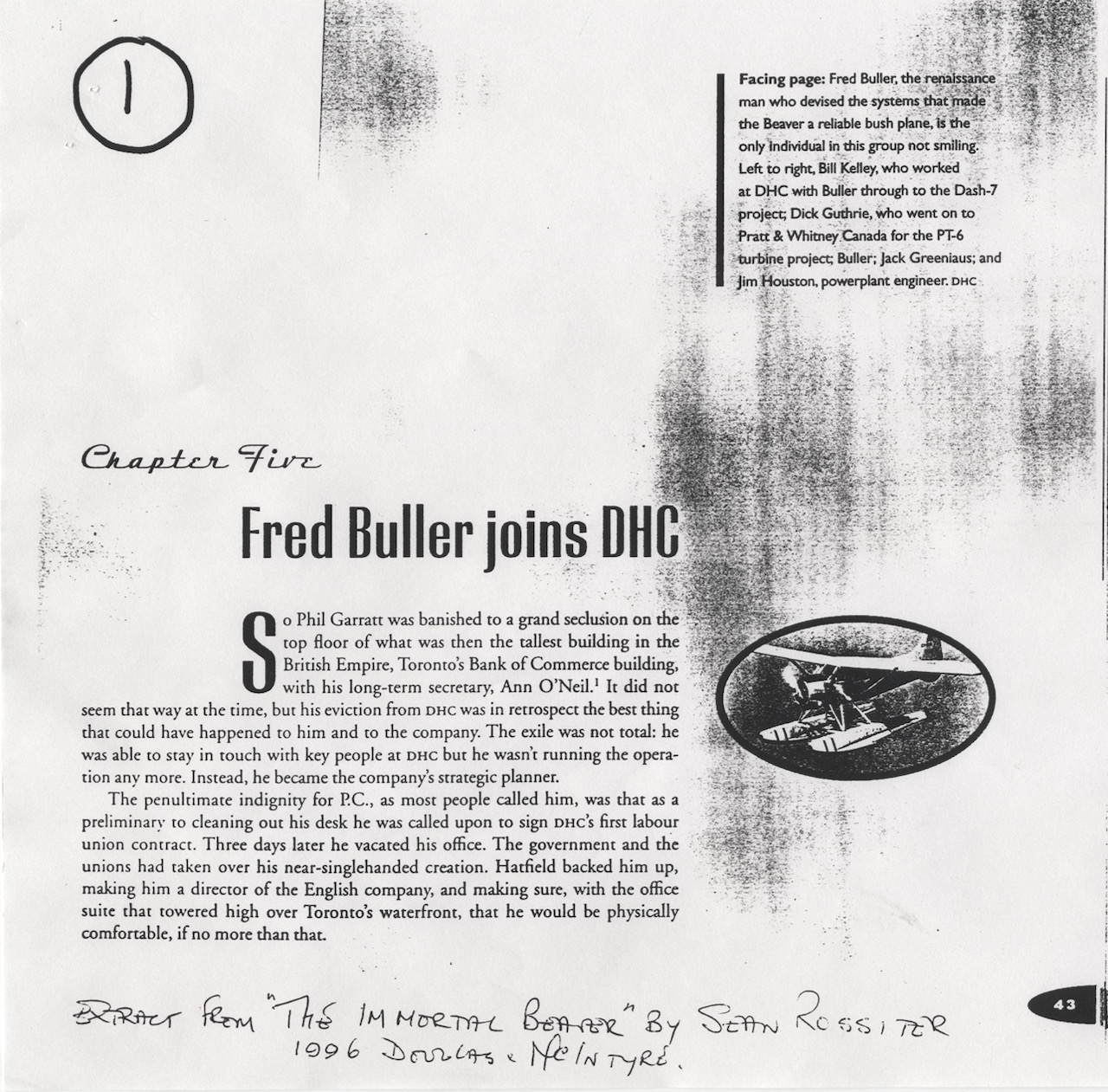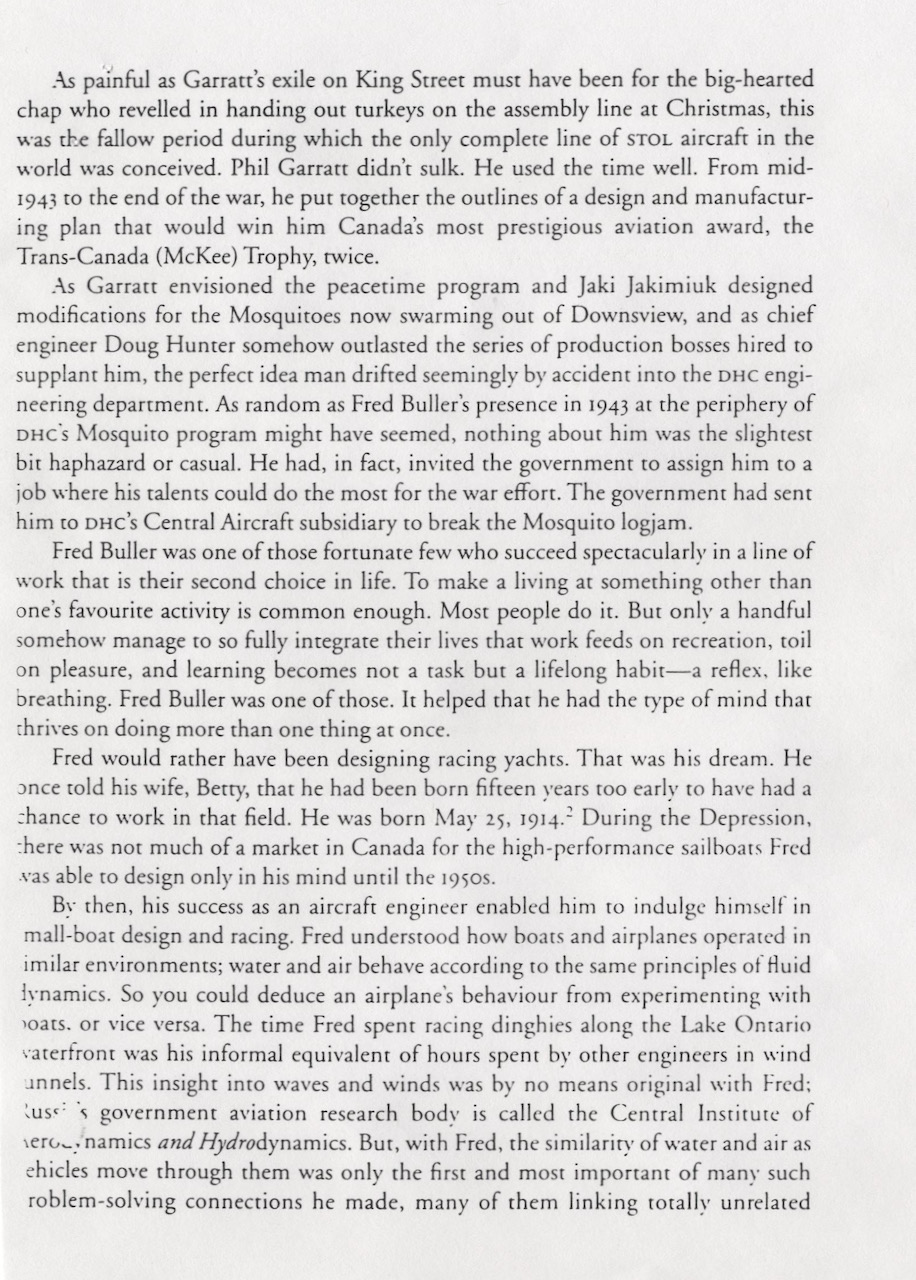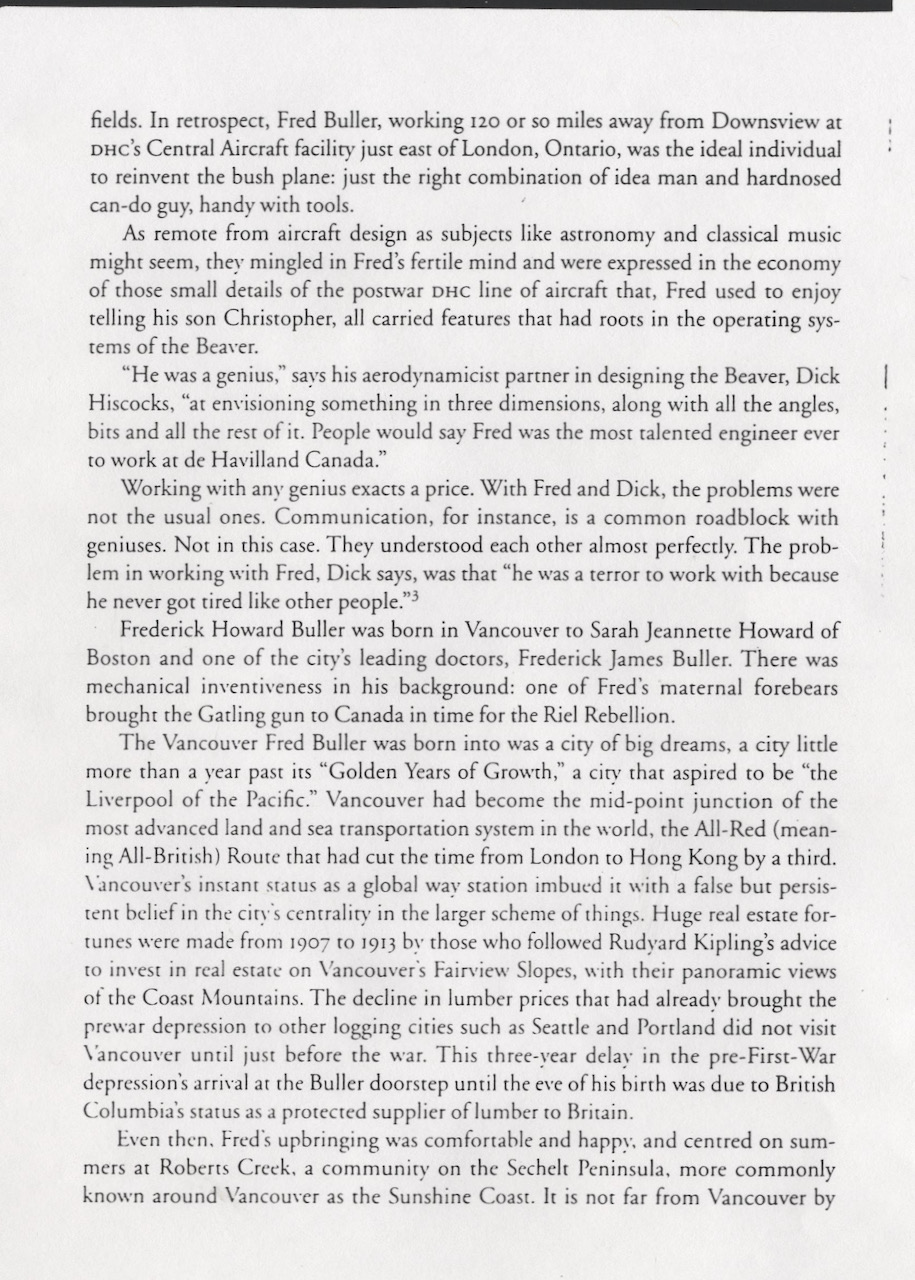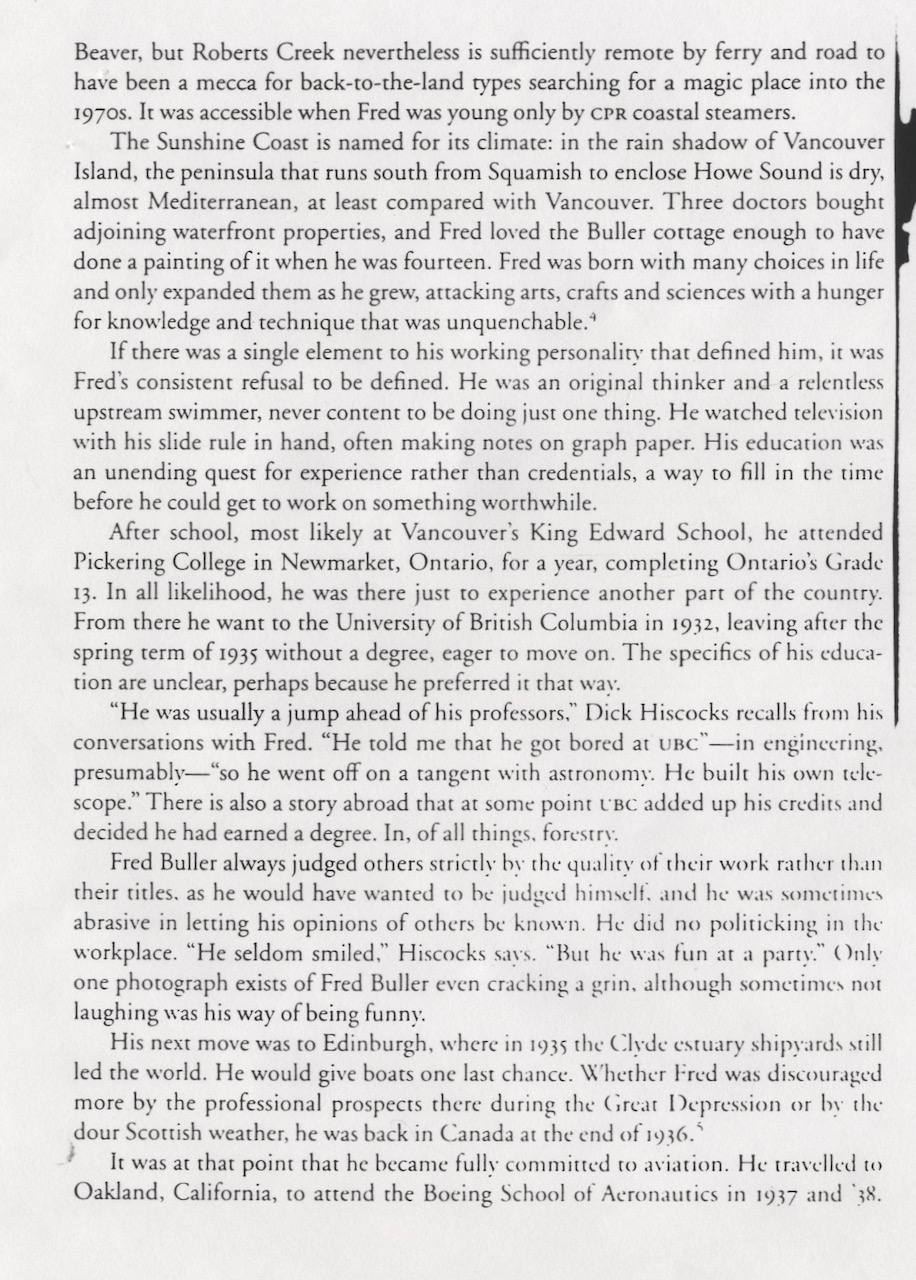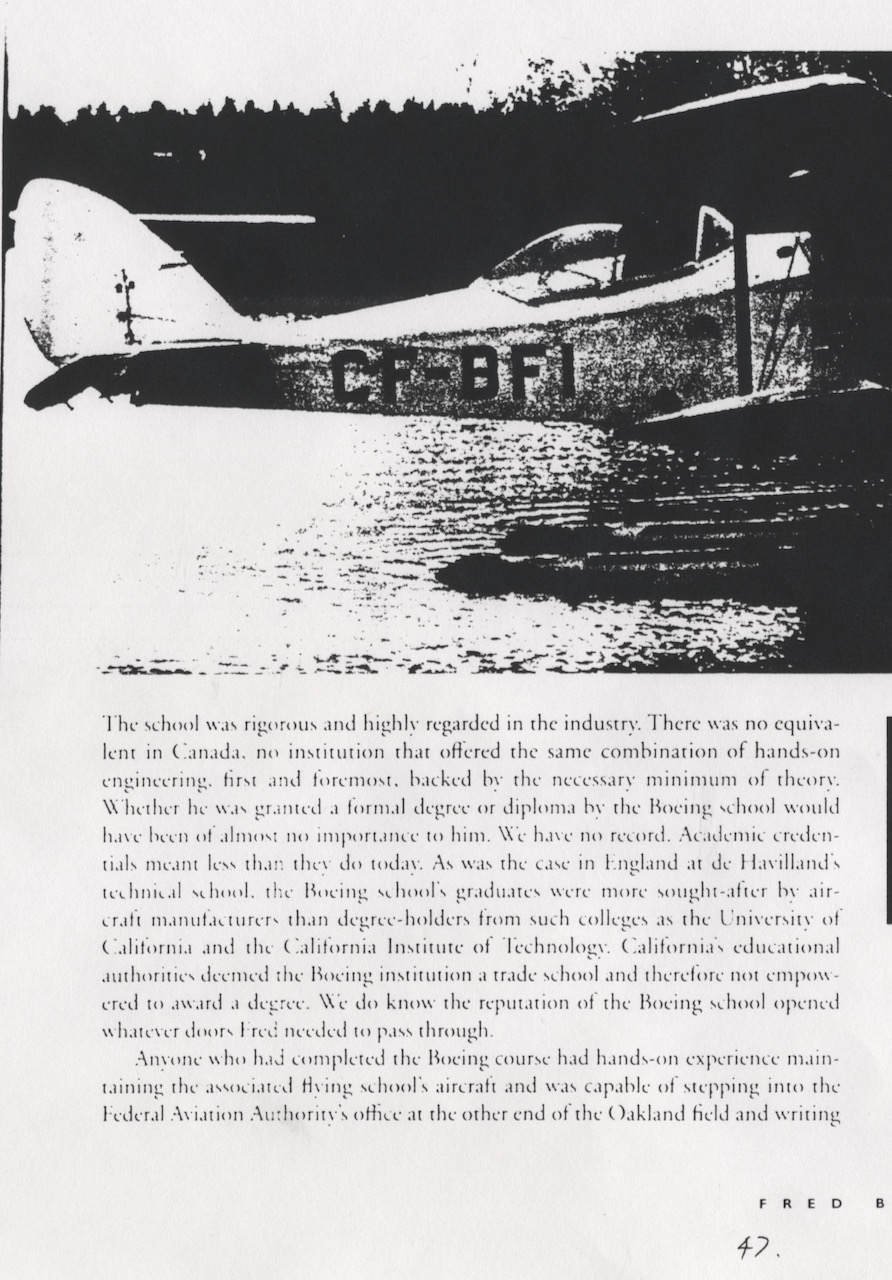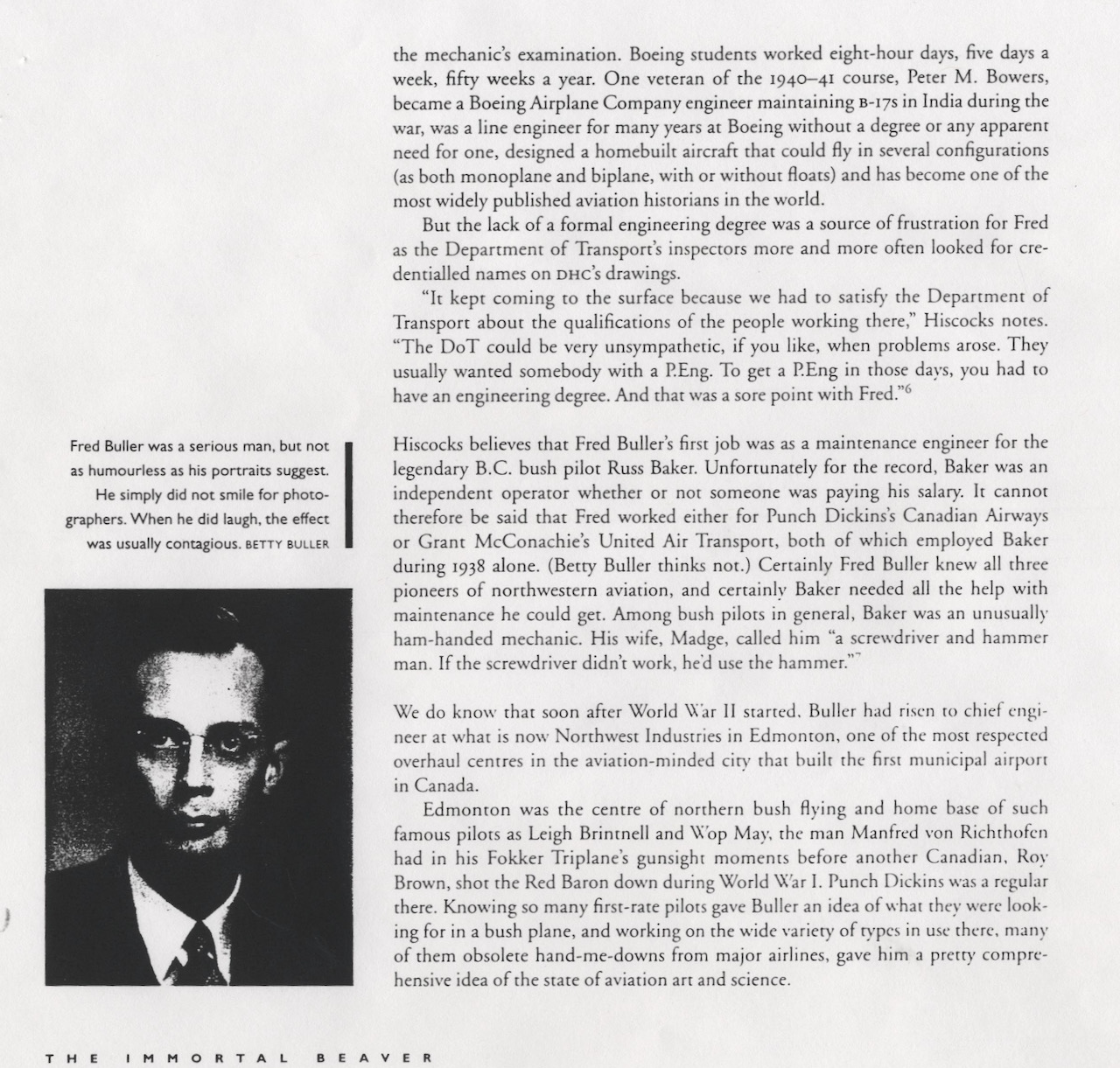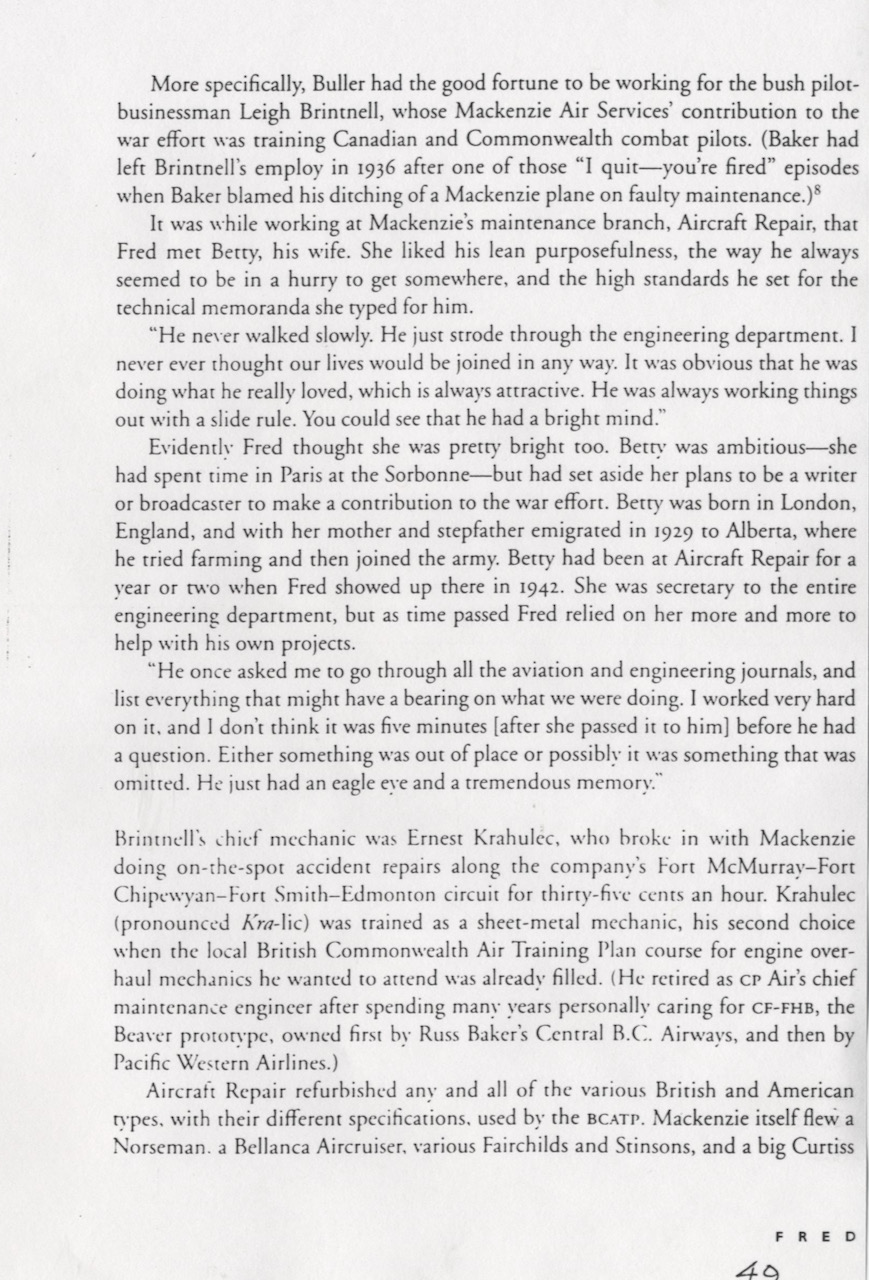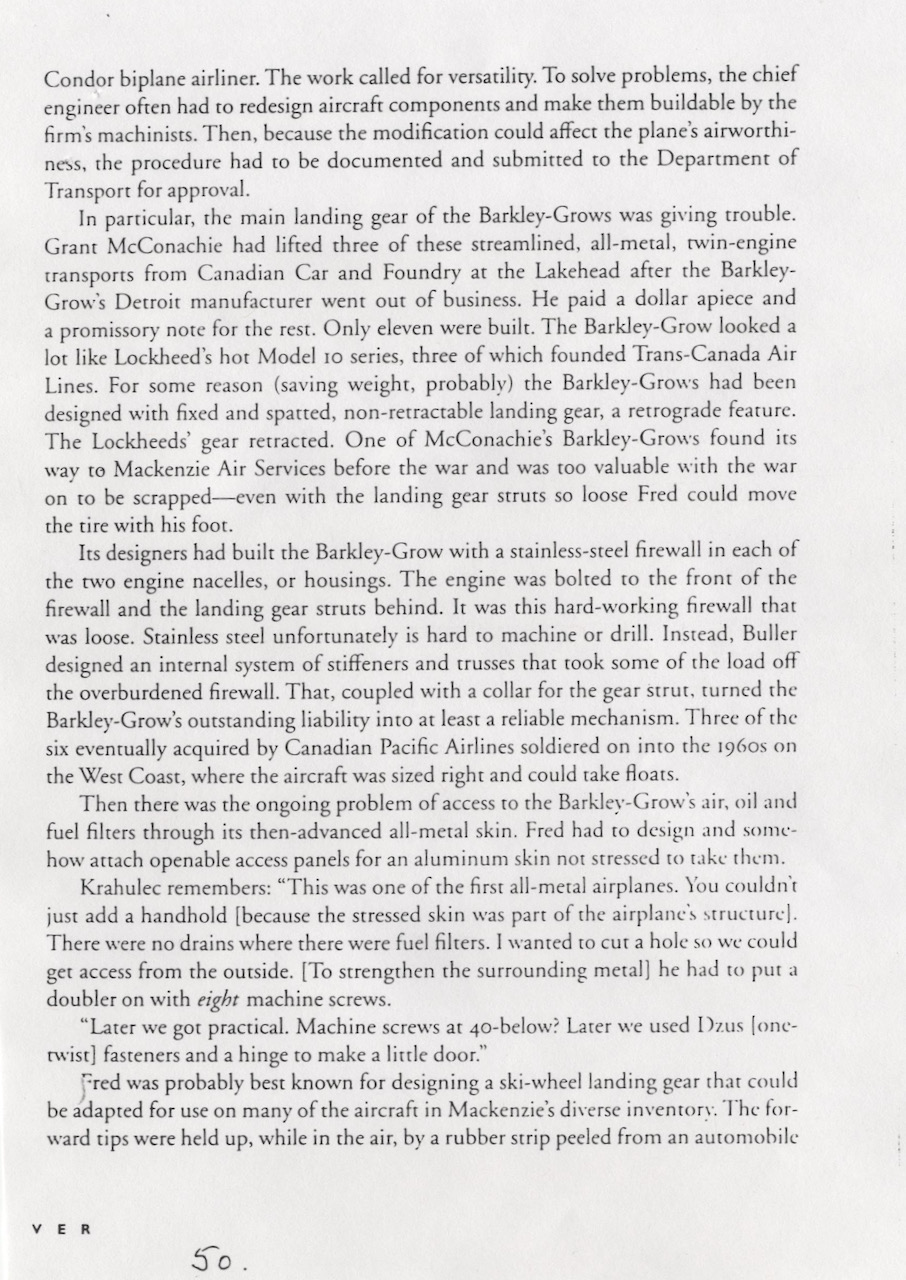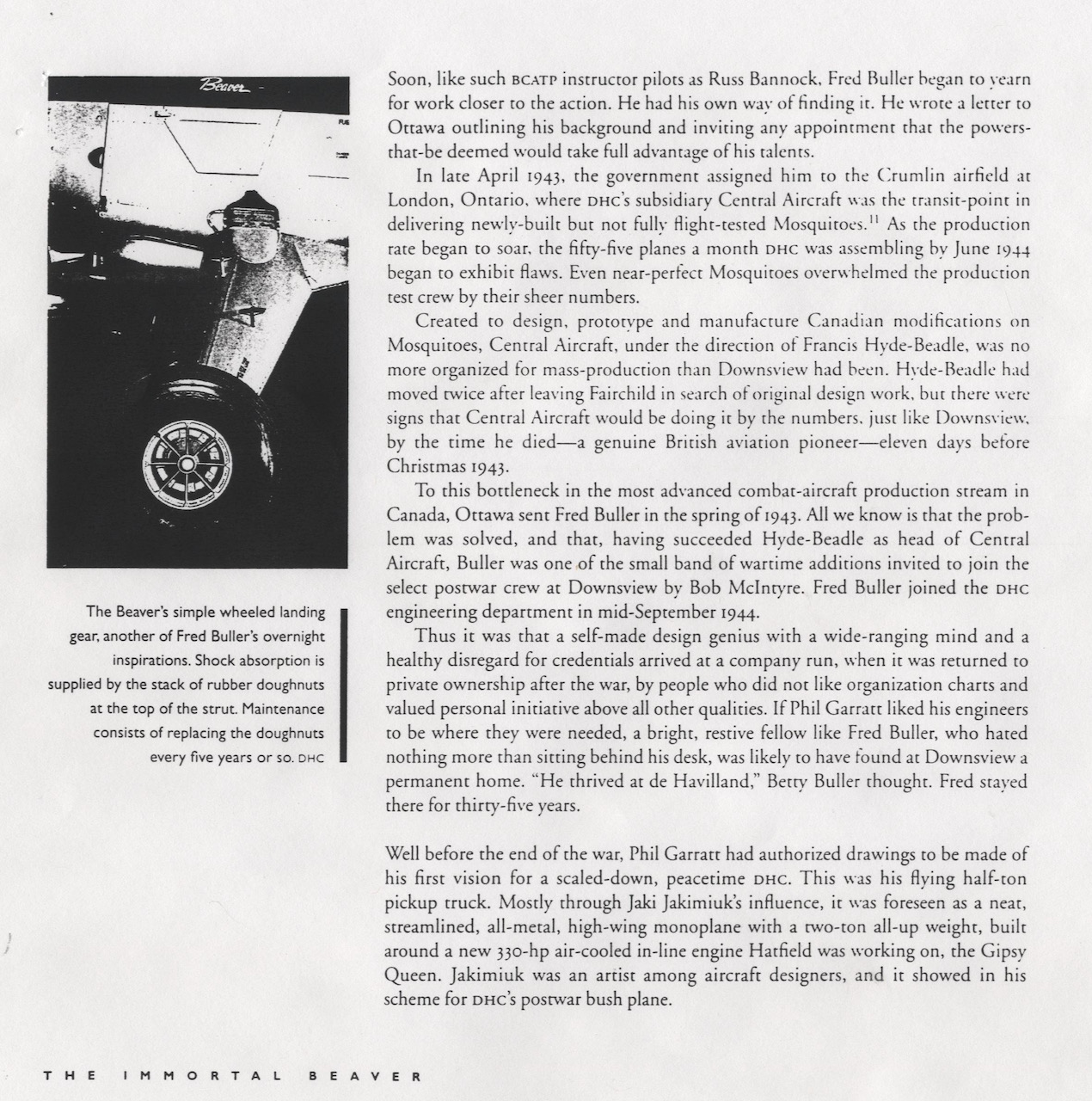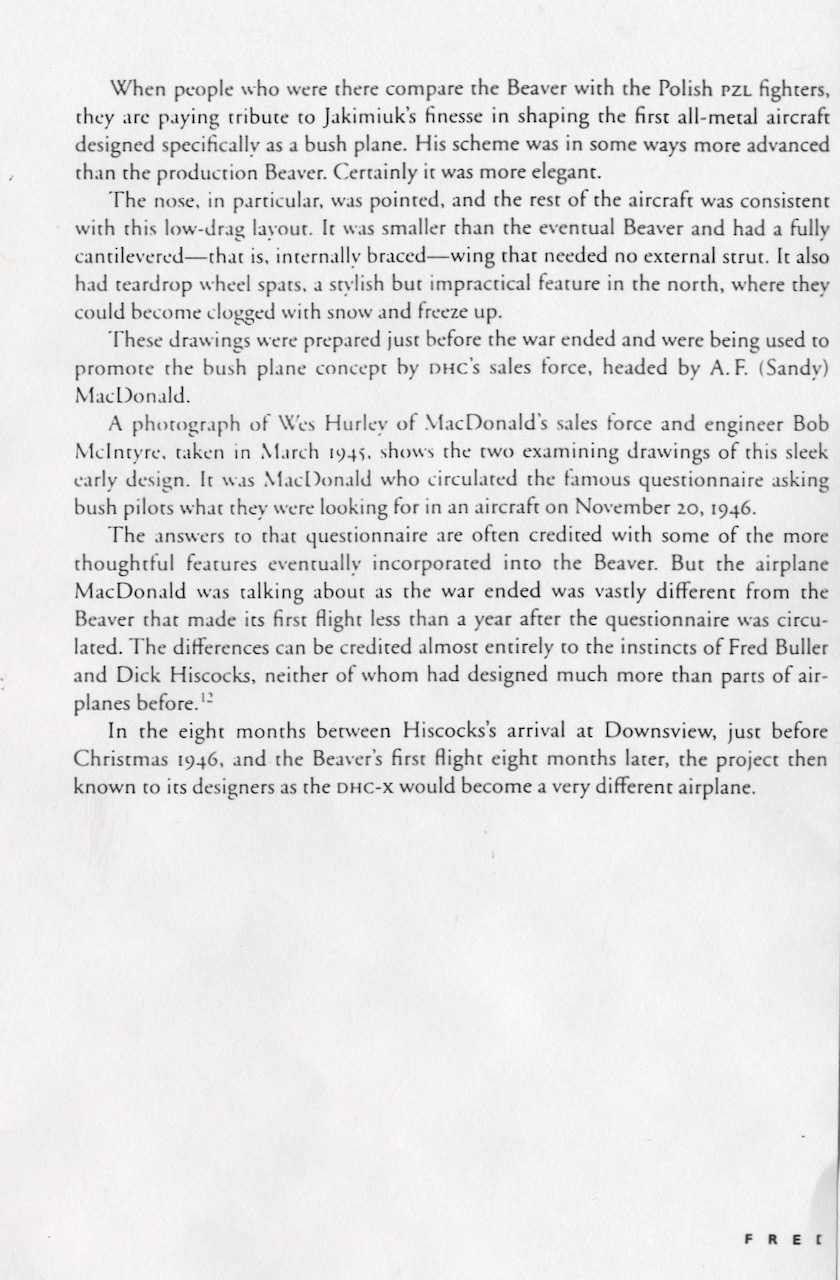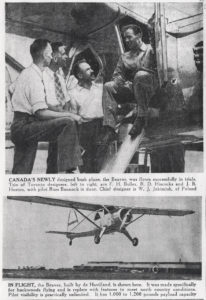Frederick Howard Buller

Birth Date: May 25, 1914
Birth Place: Vancouver, British Columbia
Death Date: June 7, 1994
Year Inducted: 1999
Awards: The McCurdy Award (CASI)
He has been described as the complete engineer, whose genius in solving difficult structural problems began with the development of the Chipmunk and carried through to the Dash 7 making his contribution to the family of de Havilland STOL aircraft of lasting value to Canadian aviation
Sail boats and Engineering
Frederick Howard Buller was born in Vancouver, British Columbia, on May 25, 1914. Growing up in Vancouver, he spent his formative summers on B.C.'s Sunshine Coast.
When scarcely a teenager, he revealed his special talents as a designer by creating and building his own boats.
His studies at the University of British Columbia from 1932 to 1935 developed his theoretical knowledge of physics, mechanics, materials, and fluid dynamics that became the tools of his craft.
Motivated by his continuing interest in sailboat design, he left B.C. for Glasgow, Scotland, in 1935 to study naval architecture first hand.
On returning from Scotland in 1937, however, he set a new course and pursued aeronautical engineering.
"After all," as he was later to point out, "what is an aircraft wing, if not a sail turned on its side?" That same year he enrolled in the Boeing School of Aeronautics in Oakland, California.
A New Career
In 1939, Buller joined Aircraft Repair (later Northwest Industries) in Edmonton, Alberta.
The rigours of devising repairs and modifications for a wide variety of civil and military aircraft, despite the constraints on time and materials imposed by the second world war, honed his ingenuity.
In 1943, the war effort took him to eastern Canada, first to Central Aircraft, a subsidiary of de Havilland Aircraft of Canada Ltd. (DHC), in London, Ontario, where he was involved in special projects.
In September of 1944 he was hired by de Havilland Canada in Downsview, the beginning of his 35-year career with that company.
Design Work
Buller's first design work on an entirely new aircraft was with the de Havilland Chipmunk, which became the primary trainer for an entire generation of Royal Air Force (RAF) and Royal Canadian Air Force (RCAF) pilots.
Like many of the designs to which he contributed, this aircraft remains highly sought after to this day.
The Chipmunk was followed by the prototypical de Havilland STOL aircraft, the Beaver, which first flew in 1947.
During his tenure as Chief Designer at DHC, no fewer than six new families of aircraft designs were developed, including the DHC-3 Otter (1951), DHC-4 Caribou (1958), DHC-5 Buffalo (1964), DHC-6 Twin Otter (1965), and DHC-7 Dash Seven (1975).
These unique designs share a common functionality and ruggedness. Many hundreds of these types remain in active service.
In addition, during the late sixties, Buller was asked to consult on a feasibility study and conceptual design for a hydrofoil to be built by de Havilland for the Royal Canadian Navy (RCN). This was to be the H.M.C.S. Bras D'or.
Accomplishments and Recognition
Buller was one of the original members of the Canadian Aeronautics and Space Institute, founded in 1955, and was a Fellow of that Institute.
In May of 1971, he received their McCurdy Award "... for his major contribution to the name and fame of the de Havilland family of STOL aircraft." He retired from de Havilland in 1979.
In 1987, the DHC-2 Beaver was named by the Engineering Centennial Board, as one of the ten best engineering accomplishments in Canada, a distinction due in large part to Buller's contributions to the design of the aircraft.
According to his colleagues, Buller's particular gift lay in his ability to resolve complex, competing engineering problems with simple but elegant design solutions. He was a frequent lecturer at the Institute of Aerospace Studies, University of Toronto.
An engaging speaker, he enjoyed interacting and encouraging students interested in aeronautical engineering and design.
In 1997 he was inducted into the de Havilland Hall of Fame.
Frederick Buller died on June 7, 1994 at White Rock, British Columbia.
Frederick Howard Buller was inducted as a Member of Canada's Aviation Hall of Fame in 1999 at a ceremony held in Winnipeg, Manitoba.
News Stories
To return to the Inductee Page, please click here.


